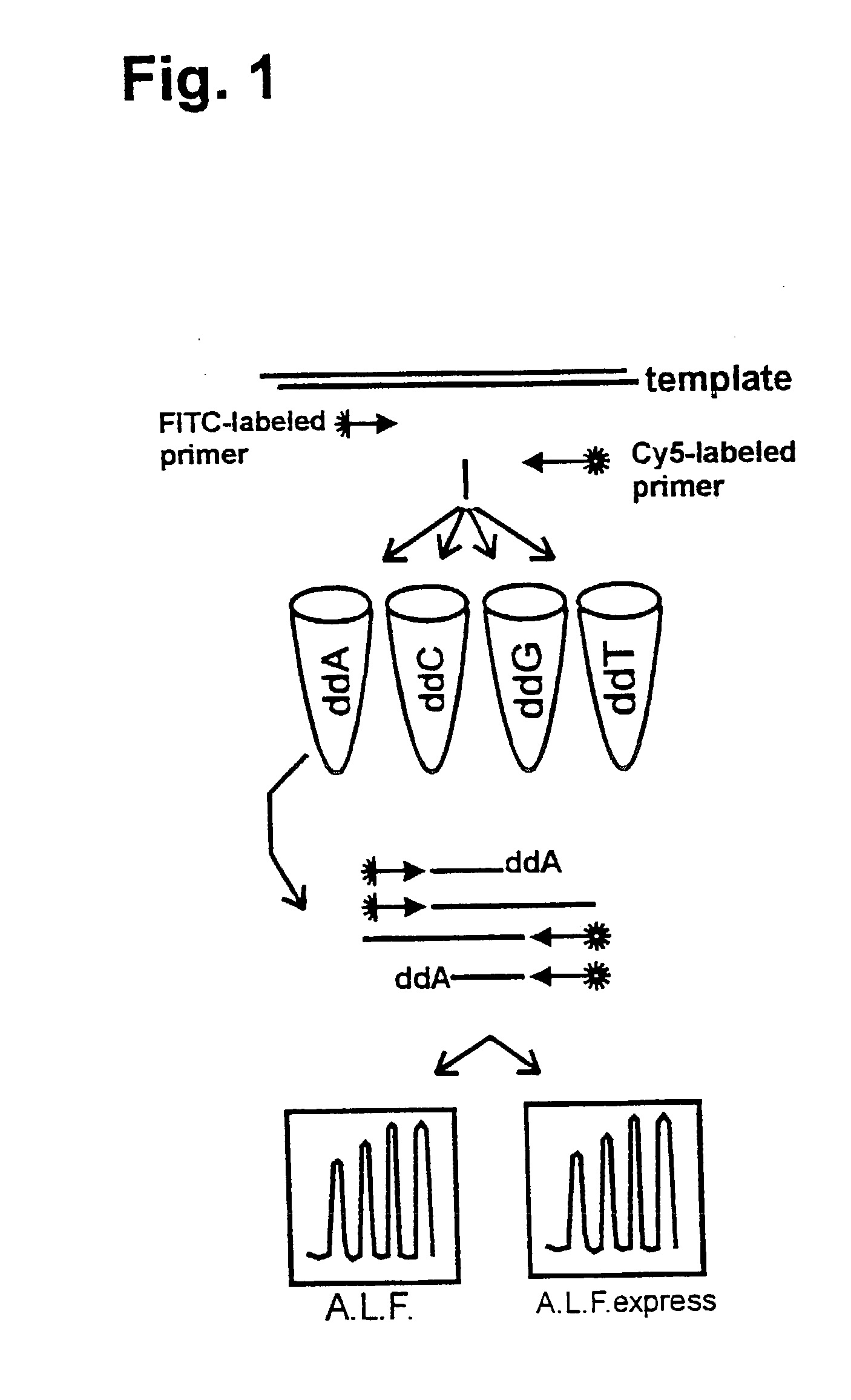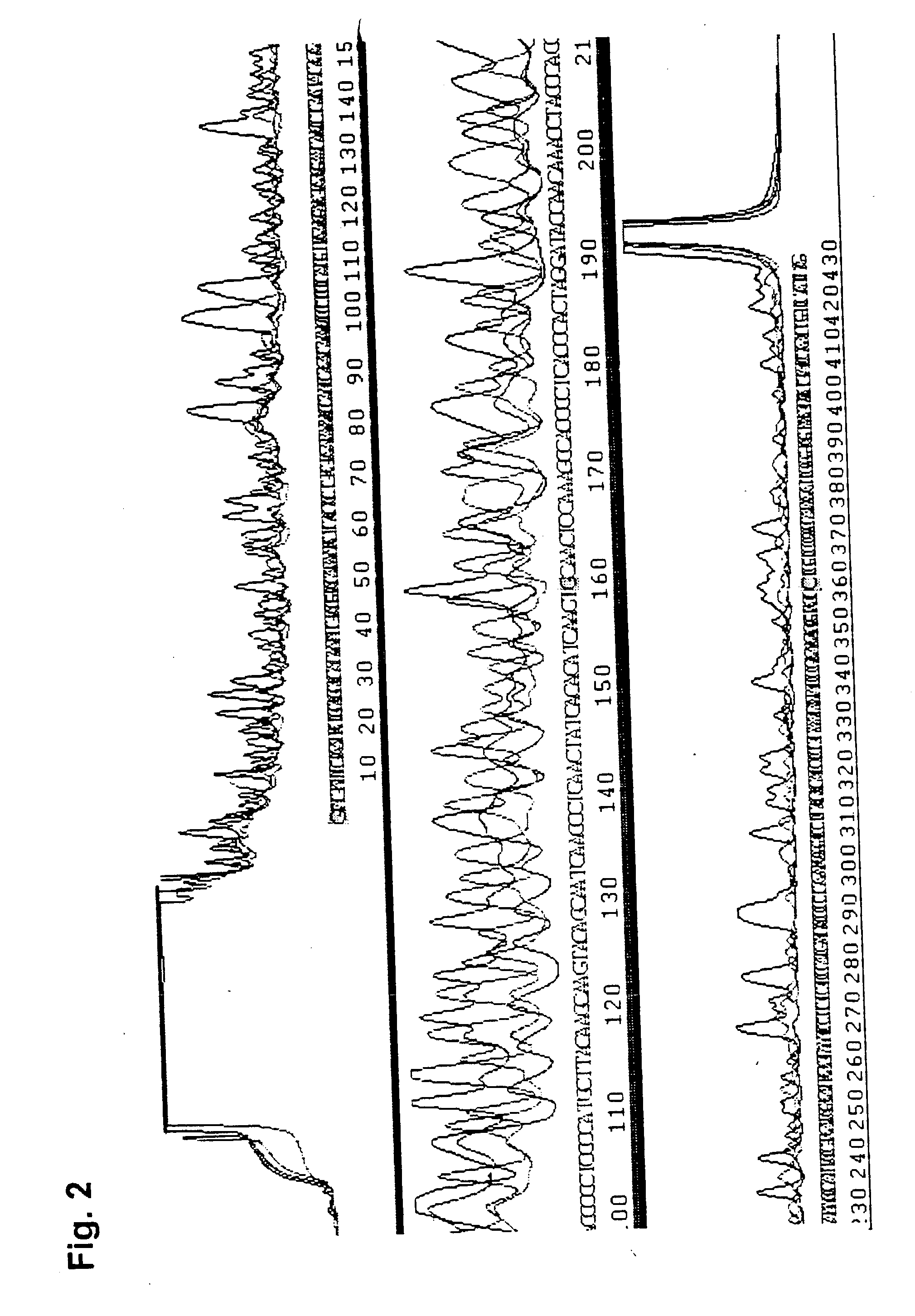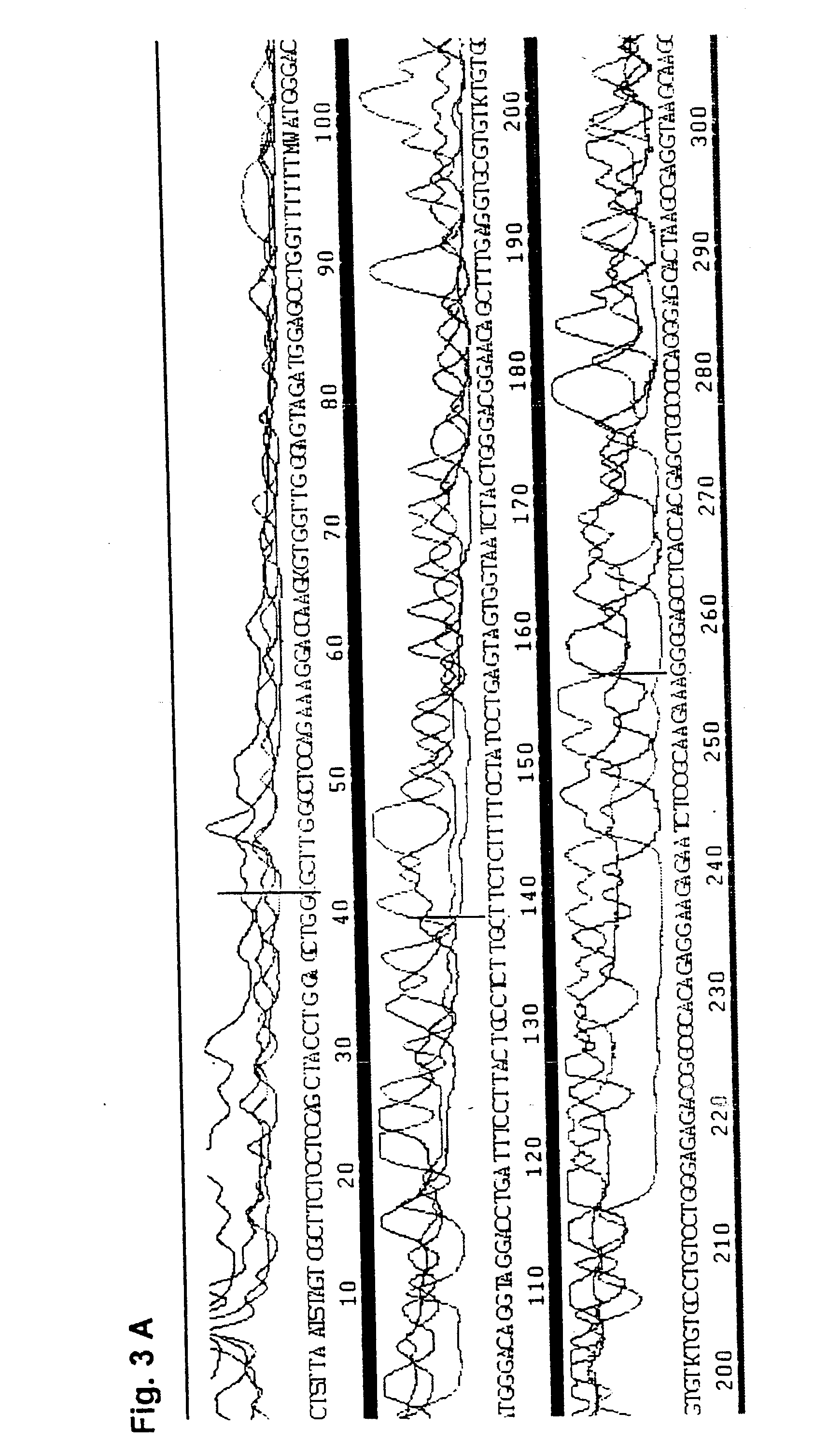Method for the direct, exponential amplification and sequencing of DNA molecules and its application
- Summary
- Abstract
- Description
- Claims
- Application Information
AI Technical Summary
Benefits of technology
Problems solved by technology
Method used
Image
Examples
example 2
DEXAS of Mitochondrial DNA Sequences
[0062] Two oligonucleotides were synthesized both having a length of 27 nucleotides which span a 521 base pair region of the human mitochondrial control region. 27-mers were used to minimize an unspecific annealing of the primers to incorrect priming positions and to enable the reaction temperatures to remain above 62.degree. C. during all synthesis steps. One of the two oligonucleotides was labelled at the 5' end with fluorescein (mtDNA1) whereas the other (mtDNA2) was unlabelled. 4 pmol of each of the primers was mixed with ThermoSequenase( (Amersham, UK) reagent which contained enzyme (DNA polymerase and thermostable pyrophosphatase), reaction buffer and a mixture of deoxynucleotides and dideoxynucleotide. Different amounts of human DNA (500 ng, 250 ng, 125 ng, 62 ng, 0 ng) were added to individual aliquots of this mixture. 500 ng template DNA but no unlabelled primer was added to one tube. The reactions were incubated for 3 minutes at 95.degre...
example 3
DEXAS of Single Copies of Human DNA Sequences
[0066] In order to evaluate the applicability of DEXAS to single-copy DNA sequences, primers were synthesized which flank a 507 base pair segment of the intron 7 and the exon 8 of the human p53 gene. DEXAS reactions were prepared which each contained 8 pmol of an FITC-labelled sequencing primer (p53-1), 4 pmol of an unlabelled (p53-2) primers and 3.5 .mu.g, 1.75 .mu.g, 875 ng and 430 ng human DNA. These reactions were denatured for 3 minutes at 95.degree. C. and 40 cycles comprising 30 seconds at 62.degree. C. and 40 seconds at 95.degree. C. were carried out. The results showed a clearly readable sequence. In order to improve the results various modifications of the protocol were evaluated. The annealing temperature was increased and the amount of the sequencing primer was reduced. Additionally the number of cycles was increased to 47 and various primer ratios and template concentrations were evaluated. The best results were obtained usin...
example 4
Simultaneous Sequencing of Both DNA Strands
[0068] It was shown that it is possible to sequence both complementary DNA strands of plasmid DNA in a single reaction using two different fluorescently-labelled primers (Wiemann, S., et al., (1995) Analytical Biochemistry 224, 117-121). The applicability of this approach to DEXAS was analysed using an FITC-labelled primer (mtDNA1), a Cy5-labelled primer (mtDNA2) and 500 ng human DNA as the template. While retaining the above reaction conditions the primer ratios were varied (FITC-mtDNA1:Cy5-mtDNA2) (3:1, 2:1, 1:1, 1:2 and 1:3). After the cycling reaction and denaturation 5 .mu.l of the reaction was applied to an A.L.F. or an A.L.F. express instrument. As in previous experiments considerably poorer results were obtained if equimolar amounts of primer were used compared to reactions in which non-equimolar amounts were used (FIG. 4). A ratio of 2:1 at a total amount of 12 pmol gave the best signal-to-noise ratio. In such reactions 450 bases w...
PUM
 Login to View More
Login to View More Abstract
Description
Claims
Application Information
 Login to View More
Login to View More - R&D
- Intellectual Property
- Life Sciences
- Materials
- Tech Scout
- Unparalleled Data Quality
- Higher Quality Content
- 60% Fewer Hallucinations
Browse by: Latest US Patents, China's latest patents, Technical Efficacy Thesaurus, Application Domain, Technology Topic, Popular Technical Reports.
© 2025 PatSnap. All rights reserved.Legal|Privacy policy|Modern Slavery Act Transparency Statement|Sitemap|About US| Contact US: help@patsnap.com



